Legumes: What are they? How are they planted? What pests and diseases do they have?
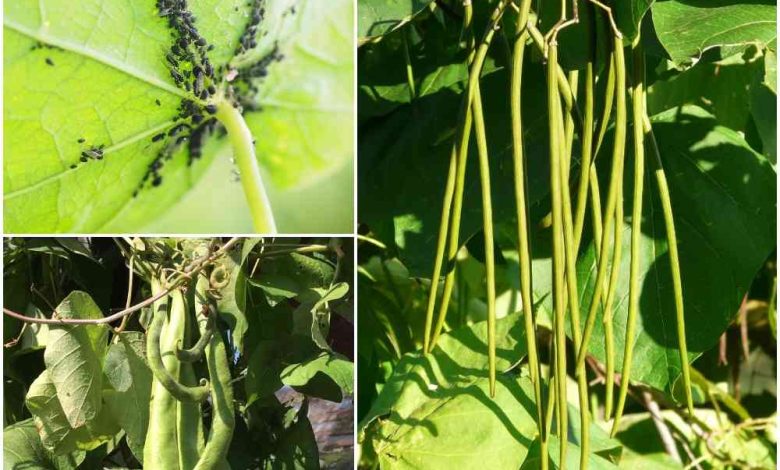
legumes, depending on their species, have been known by various cultures since ancient times.
In fact, it is believed that together with cereals, they were the first plants cultivated in the Neolithic period, that is, when man began to work the land as a complementary activity to hunting.
It is a group of plants belonging to the Fabaceae family (Fabaceae), made up of a wide variety of trees, shrubs, vines and even herbs, whose common characteristics are their stipulated leaves and their pod-shaped fruit.
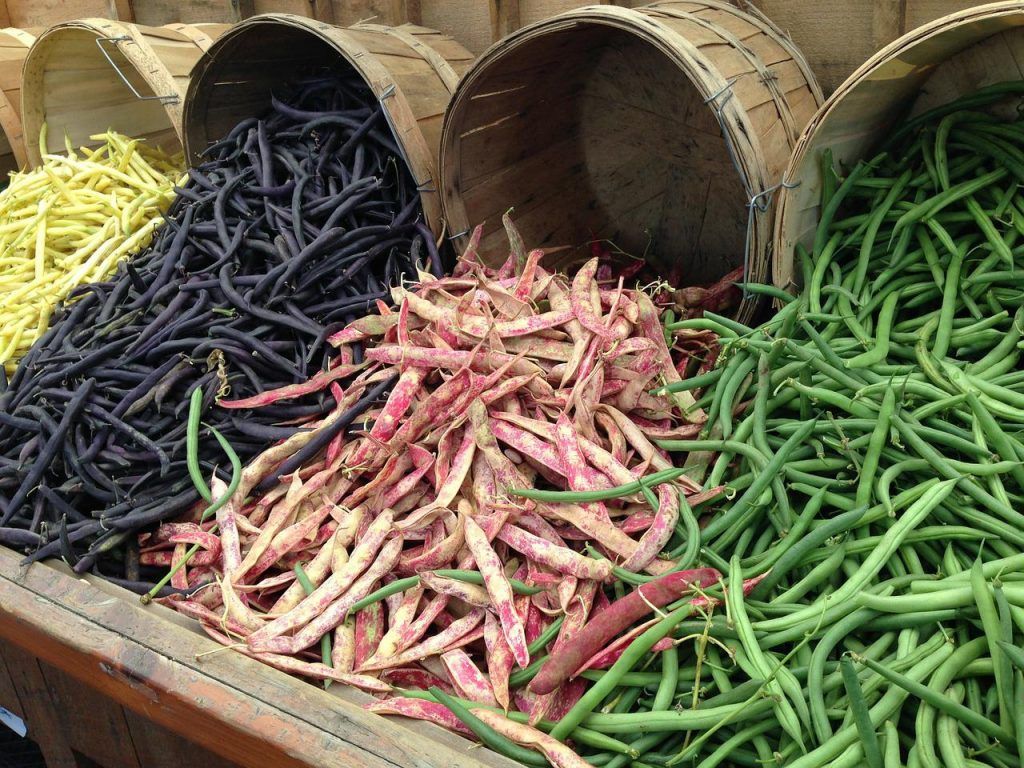
What are legumes?
In general, the fruits of these plants are known as “legumes”, but this term, according to the FAO (2015), excludes the fruits of pods whose content is harvested green for consumption (such as beans).
Therefore, it should be noted that legumes include both the pods that contain grains for fresh consumption, and those with dry seeds (legumes).
In this way, legume pods are harvested with the intention of obtaining the seeds inside, which represent an important source of protein, nutrients and soluble fiber, which is why they are usually consumed throughout the world and used for combat diseases such as obesity and diabetes.
What are legumes? [Types, List and Names]
Around 19,000 species of fabaceae or legumes are currently known, this group of plants being the third with the greatest variety.
However, the characteristics of some of the most common legumes are described below:
Alfalfa (Medicago sativa)
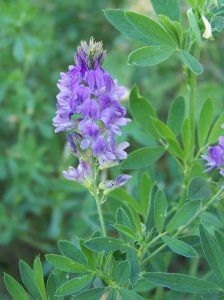 It is a herbaceous plant up to 60 cm tall whose fruit is a spiral pod with approximately 11 turns. It is rich in calcium, potassium, iron, phosphorus and vitamins C, D, E and K.
It is a herbaceous plant up to 60 cm tall whose fruit is a spiral pod with approximately 11 turns. It is rich in calcium, potassium, iron, phosphorus and vitamins C, D, E and K.
The seeds should be sprinkled over the soil evenly and only half an inch deep, because their roots are fast-growing.
It tolerates various environmental conditions although it prefers cold climates and exposure to light.
As for irrigation, it will depend on the season; In this way, in spring times it requires few amounts of water and in periods of high evaporation, irrigation must be more continuous.
However, it is important to remember that this plant prefers slightly moist, well-drained soil.
- To know more: Complete Guide to Plant Alfalfa.
Pea or pea (Vicia sativa)
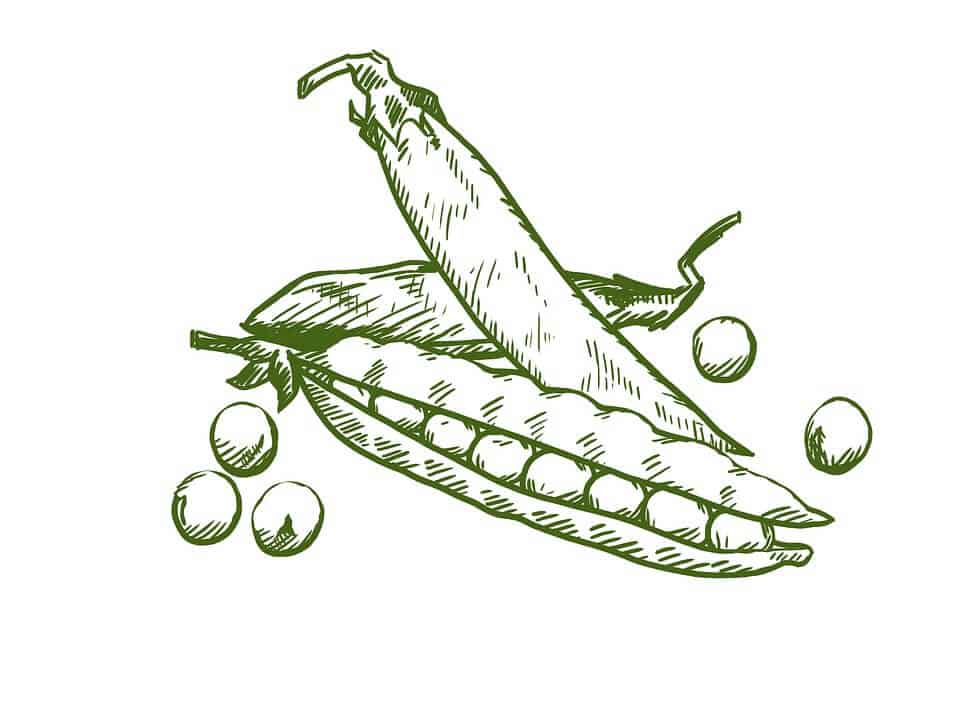 It is an annual legume up to 80 cm tall, with more or less angular stems and legumes with 4 to 9 brown seeds.
It is an annual legume up to 80 cm tall, with more or less angular stems and legumes with 4 to 9 brown seeds.
Peas are an important source of protein and B vitamins.
The seeds should be sown near a cereal (oats or barley) that serves as a tutor for the plant, because it is cultivated as a dry land, that is, it does not intervene in the irrigation of the fields but only uses what comes from of rain.
This plant requires little sunlight and dry to moist soils.
Peanut or groundnut (Arachis hypogaea)
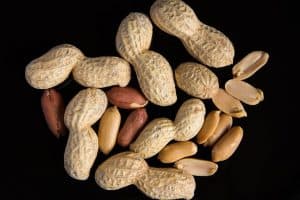 It is an erect herb up to 80 cm tall, with a yellowish stem, hairy stipules and pod-shaped fruit, developing underground and with thick veined walls.
It is an erect herb up to 80 cm tall, with a yellowish stem, hairy stipules and pod-shaped fruit, developing underground and with thick veined walls.
Its content is from 1 to 6 oblong seeds with a high content of healthy fats , potassium, phosphorus and magnesium.
Seeds are sown 30 to 40 cm apart, in furrows 40 to 50 cm apart.
They germinate well in hot climates and prefer fertile, well-drained, loosely structured soils that are high in calcium.
Irrigation should be constant but not excessive; It is usually sown in late spring and harvested in late fall, to take advantage of the rains.
- To know more: Complete Guide to Grow Peanuts
Chickpea (Cicer arietinum)
 It is an annual herbaceous legume, approximately 50 cm tall, with white flowers and pods of between 2 and 3 rounded seeds that, depending on the cultivated variety, can be smooth or wrinkled.
It is an annual herbaceous legume, approximately 50 cm tall, with white flowers and pods of between 2 and 3 rounded seeds that, depending on the cultivated variety, can be smooth or wrinkled.
Chickpeas are rich in healthy fats and an important source of fiber.
How to plant chickpeas?
The seeds must be deposited on the ground (previously prepared with a fertilizer) and then covered with 2 cm of sand. It prefers dry climates and clay soils.
It can be watered every two weeks after sowing, as long as it has not rained during that time. As for the harvest, it can be done once the leaves begin to turn yellow.
- To know more: Complete Guide to Plant Chickpeas
Pea (Pisum sativum)
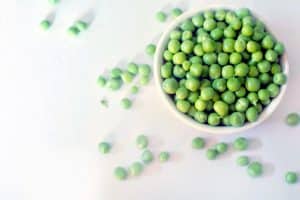 It is a climbing herbaceous plant that, like its seeds, is known by various names (peas, petipúas or sweet peas, among others).
It is a climbing herbaceous plant that, like its seeds, is known by various names (peas, petipúas or sweet peas, among others).
The pods of this legume are usually cylindrical and contain from 3 to 12 green seeds of different shapes and sizes. Peas are rich in protein, minerals, and fiber.
Sowing is done directly on the ground, leaving a separation of 50 cm between the production lines and covering the seeds with 4 cm of soil.
Peas are cool climates with moderate cold, they adapt to almost all types of soils and require copious watering without waterlogging. They can be harvested 12 to 14 weeks after germination.
- To know more: Complete Guide to Plant Peas.
Broad bean (Vicia faba)
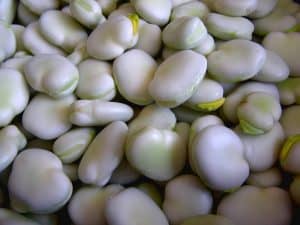 It is a herbaceous plant with erect stems up to 1.6 meters high, with alternate leaves and pods inside which are located from 2 to 9 seeds, the latter protected by a white and spongy tissue.
It is a herbaceous plant with erect stems up to 1.6 meters high, with alternate leaves and pods inside which are located from 2 to 9 seeds, the latter protected by a white and spongy tissue.
Rum beans are rich in potassium, magnesium, phosphorus, calcium and vitamin A.
The seeds should be sown directly in the ground, in a cool climate and with a lot of exposure to sunlight.
They prefer well-drained clay soils, with constant irrigation and at ground level, that is, they enjoy humidity. The harvest, meanwhile, can be done 85 to 110 days after sowing.
- To know more: Complete Guide to Plant Broad Beans.
Bean (Phaseolus vulgaris)
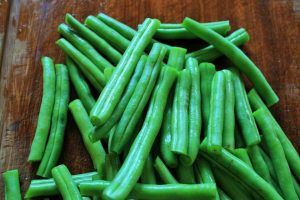 Also known as beans, beans, snap beans or beans, it is an annual herbaceous plant whose linear legume can contain from 4 to 10 seeds of various colors and sizes (depending on the variety), with a high content of B vitamins, folic acid and minerals.
Also known as beans, beans, snap beans or beans, it is an annual herbaceous plant whose linear legume can contain from 4 to 10 seeds of various colors and sizes (depending on the variety), with a high content of B vitamins, folic acid and minerals.
The seeds are sown directly on the ground, with abundant exposure to the sun. They thrive best in warm and temperate climates.
They do not require fertilization but they do require soils rich in humus (without fresh organic matter). As for irrigation, beans need humidity, but in spring it is preferable to depend only on the rains.
- To learn more: Complete Guide to Grow Beans.
- To know more: Complete Guide to Grow Green Beans.
- To know more: Varieties of Beans.
- To learn more: Plant Beans.
Lentil (Lens culinaris)
 It is an annual herbaceous plant, with stems approximately 40 cm high.
It is an annual herbaceous plant, with stems approximately 40 cm high.
Leaves in lanceolate stipules, white flowers and fruit in the form of a small pod that contains 2 to 3 brown seeds, half a centimeter long and whose nutritional content is high in B vitamins, folic acid, zinc and selenium.
To sow lentils, the seeds are deposited in the soil 2 to 3 cm deep.
They are cold weather or winter, so it is convenient to sow in late fall. It prefers well-drained sandy soils, and although they can tolerate drought, the soil must be kept moist.
It can be harvested at the end of spring, when the grains have a toasty yellow coloration.
Soy or Soybean (Glycine max)
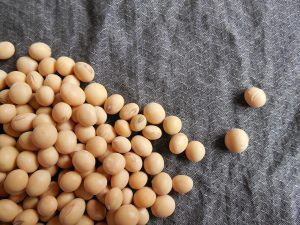 It is perhaps the most appreciated legume species, due to its multiple uses. Its healthy protein and oil content make it an essential food for man, livestock and poultry.
It is perhaps the most appreciated legume species, due to its multiple uses. Its healthy protein and oil content make it an essential food for man, livestock and poultry.
The plant can measure up to 1 meter in height, its pod grows in groups of 3 to 5 and each one can contain 2 to 4 seeds of 11 mm in diameter.
The seeds are sown in the ground with a maximum depth of 4 cm.
The ideal temperature for the development of the plant ranges from 20° to 30° C. It usually tolerates poorly fertilized, neutral or slightly acidic soils. They resist drought well, so watering should not be copious, although it should guarantee a minimum humidity.
- To learn more: How to grow soybeans.
Tamarind (Tamarindus indica)
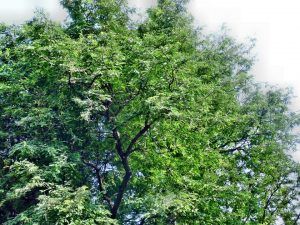 It is a tree up to 30 meters high, with alternate leaves and pod – shaped cinnamon – colored fruits, 5 to 20 cm long. The pulp that surrounds the seeds inside the pod is the edible part.
It is a tree up to 30 meters high, with alternate leaves and pod – shaped cinnamon – colored fruits, 5 to 20 cm long. The pulp that surrounds the seeds inside the pod is the edible part.
Sowing is by seeds, in deep soils and in tropical or subtropical climates.
Irrigation should be done by drip, to avoid puddles. It prefers soils rich in organic matter. It can begin to produce fruit 7 to 10 years after planting.
- To know more: How to plant a tamarind.
Planting and irrigation of legumes
Being a large group of plants, it is not unreasonable to think that for each variety, there are different sowing and irrigation methodologies; therefore the procedure will be described for each species:
As can be seen, there are marked differences in the planting methodology for certain legumes, and even when the majority is by seed and directly on the ground, the weather conditions and soil moisture do tend to vary for each species.
However, there is another characteristic of legumes that is common to all varieties: it is the ability of these plants to fix nitrogen in the soil.
According to Reynoso (2016), legumes are capable of producing nitrogen by activating Rhizobium leguminosarum bacteria, which form nodules on plant roots, taking nitrogen from the atmosphere and fixing it in the soil.
Important:Since nitrogen is one of the main plant foods, by using legumes in orchards, we will be reducing the use of chemical fertilizers and, consequently, reducing levels of pollution in ecosystems: hence its importance in agriculture.
Common pests and diseases in legumes
According to Hill (2017), each type of legume is susceptible to certain agents, however, there are typical problems that affect all of them in a general way.
The pests and diseases of legumes that we can highlight are:
- The curculio (Chalcodermus aeneus Boheman): The adult insect is oval in shape and black in color, also having subtle details in bronze. It usually affects broad beans, beans, soybeans, peas and other legumes. This pest feeds on pods.
- The stink bug (Halyomorpha halys): Affects a variety of legumes, and as its name suggests, emits a foul odor when crushed, making it a troublesome intruder. Some of the crops affected by this type of bug include soybeans, beans and peas, appearing inside the pods.
- Bacterial pests: Bacteriosis is a soil-borne disease through interaction with bacteria harmful to the plant. The symptoms differ depending on the contaminating agent; in this sense, the legumes may present white or yellow crusty films, lesions or spots on their leaves and the pods may be desiccated or fall off. There are several bacteria that cause pest problems, among which we find common blight (Xanthomonas phaseoli), Fuscous blight (X. phaseoli var. fuscans), Wilt blight (Corynebacterium flaccumfaciens) and Halo blight (Pseudomonas phaseolicola).
Are pulses and legumes the same?
Although they are terms that are often used as if they were synonyms, it is not exactly like that.
Legumes are the plants from which legumes are harvested. That is to say, legumes are what the human being ends up consuming, rich in fiber and vegetable proteins.
On the other hand, the legume is the plant that develops edible seeds (chickpeas, lentils, etc.).
history of legumes
The origin of these plants is still widely discussed by some historians, because some argue that legumes date back 20,000 years, but it has only been possible to verify theexistence of this crop until 10,000 years ago, in the Middle East.
In this order of ideas, Egyptian inscriptions have been observed that document a series of rituals in which lentils are venerated.
For their part, the Roman armies demanded a large amount of food based on dry vegetables, and in times of cereal scarcity, the beans were ground to prepare a kind of coarse bread.
The Bible is another proof document that refers to the passion of the Romans for legumes, and therefore, also of the Hebrew people.
In Greece, the chickpea was a common food in Homer’s time, and there is also evidence of its use to cast the vote in the agora. Ancient remains of peas, lentils and peas have been found in the palaces of Crete (Ministerio de Agroindustria de Argentina, 2017).
As for Spain, it is thought that legumes began to be used in the Middle Ages, to combat the epidemics left by the war, and from the encounter between the worlds, the exchange of various varieties between America and Europe took place.

![Photo of Lavender Pests and Diseases: [Detection, Causes and Solutions]](https://www.complete-gardening.com/wp-content/uploads/2021/06/lavanda_1603497780-390x220.jpg)
![Photo of Magnesium for Plants: [Use, Advantages, Excess and Deficiencies]](https://www.complete-gardening.com/wp-content/uploads/2021/06/sodio_1605178941-390x220.jpg)
![Photo of Carpobrotus: [Cultivation, Irrigation, Care, Pests and Diseases]](https://www.complete-gardening.com/wp-content/uploads/2022/08/carpobrotus-cultivation-irrigation-care-pests-and-diseases-390x220.jpg)
![Photo of Pear Tree Pests and Diseases: [Detection, Causes and Solutions]](https://www.complete-gardening.com/wp-content/uploads/2022/08/pear-tree-pests-and-diseases-detection-causes-and-solutions-390x220.jpg)